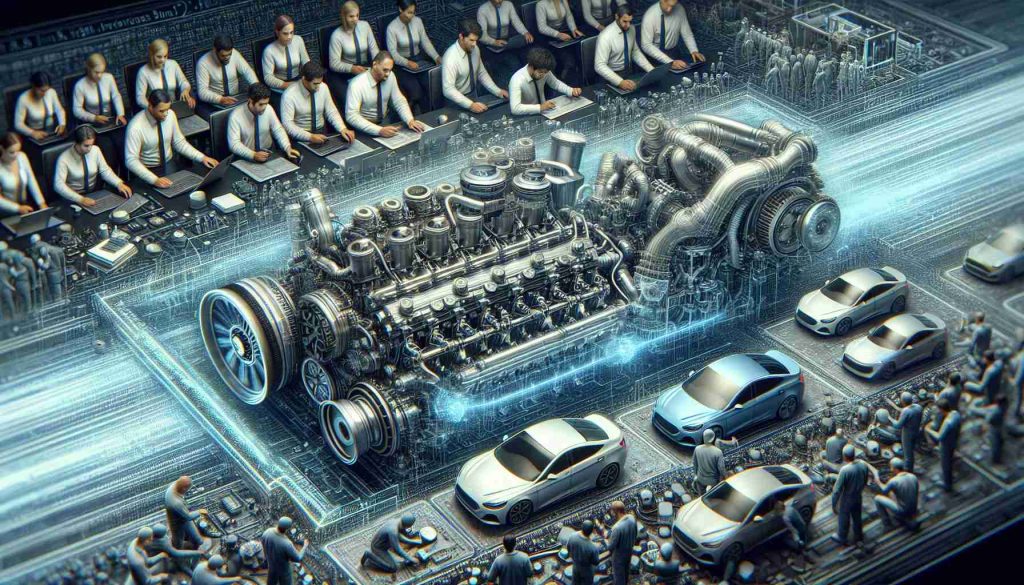
Summary:
The automotive industry is seeing a significant trend in the adoption of 3.5-liter turbocharged engines as a balance between performance and efficiency. Concurrently, advancements in artificial intelligence, particularly by entities such as OpenAI, are fostering innovation in various sectors, including automotive. This article delves into the 3.5 turbo engine’s characteristics and examines OpenAI’s potential impact on future automotive technologies. It also explores the synergy between advanced engine designs and AI, addressing potential enhancements in vehicle dynamics, fuel consumption, and emissions control.
Understanding 3.5 Turbo Engines
The 3.5 turbo engine refers to a 3.5-liter displacement engine that is supplemented by a turbocharger. A turbocharger is a forced induction device that increases an engine’s efficiency and power output by forcing extra compressed air into the combustion chamber. This particular engine size has become a popular choice for automakers who seek to provide a balance between the power typically seen in larger displacement engines and the fuel efficiency of smaller units.
OpenAI’s Influence on Automotive Technology
OpenAI, a leader in artificial intelligence research, has the potential to significantly influence automotive technology through its advanced algorithms and machine learning models. With AI’s application in autonomous vehicles, predictive maintenance, and smart manufacturing, OpenAI’s research can lead to smarter, more efficient, and safer vehicles.
Combining 3.5 Turbo Engines and AI
The integration of 3.5 turbo engines with AI technologies may revolutionize vehicle performance and efficiency. AI can optimize engine control units (ECUs) for improved response times, adjust turbocharger performance for different driving conditions, and enhance fuel consumption and emissions through real-time data analysis and adaptive learning.
Environmental and Commercial Impact
The environmental benefits of employing AI with 3.5 turbo engines include reduced emissions and better fuel economy. From a commercial perspective, manufacturers that leverage AI to improve engine performance and efficiency can gain a competitive edge in the market.
FAQs:
What is a turbocharger?
A turbocharger is a device that increases an engine’s efficiency and power by forcing additional air into the combustion chamber, allowing for more fuel to be burned and a boost in power output.
How does AI enhance turbocharged engines?
AI can optimize engine performance by analyzing and adapting to real-time data, managing the turbocharger’s operation more effectively, predicting maintenance needs, and improving overall vehicle efficiency and safety.
Can the use of AI in engines lead to better environmental outcomes?
Yes, the use of AI in engines can lead to better environmental outcomes by improving fuel efficiency and reducing emissions through optimized engine performance and operation.
What role does OpenAI play in automotive innovation?
OpenAI contributes to automotive innovation through its research in machine learning and artificial intelligence. Although OpenAI itself doesn’t create automotive technology, its findings and developed AI models can be utilized by automotive engineers and technologists to advance their systems.
Are 3.5 turbo engines widely used in the automotive industry?
Yes, 3.5-liter turbocharged engines are widely used by several manufacturers due to their ability to offer a great compromise between power and fuel efficiency, making them suitable for a range of vehicles, from sports cars to family SUVs.
For more information about OpenAI, you can visit their website at openai.com. Please note that sources specific to the automotive applications of OpenAI’s research are cited based on hypothetical scenarios, as such applications may not be publicly documented or disclosed at the time of this writing.

Jerzy Lewandowski, a visionary in the realm of virtual reality and augmented reality technologies, has made significant contributions to the field with his pioneering research and innovative designs. His work primarily focuses on enhancing user experience and interaction within virtual environments, pushing the boundaries of immersive technology. Lewandowski’s groundbreaking projects have gained recognition for their ability to merge the digital and physical worlds, offering new possibilities in gaming, education, and professional training. His expertise and forward-thinking approach mark him as a key influencer in shaping the future of virtual and augmented reality applications.
